



The George J Mitchell Department of Special Collections & Archives at Maine's Bowdoin College have a modest but interesting exhibition entitled Blissful Books and Bindings with a selection of bookbinders' works of the upmarket variety. There's also a glossary of bookbinding terms.
Saturday, October 08, 2005
Blissful Bindings
Picturing Words
 Young people of the Niam-Niam, north-east Congo basin from
Young people of the Niam-Niam, north-east Congo basin fromLe tour du monde: nouveau journal des voyages
(The World Tour: A New Journal of Travels) Édouard Charton, ed.
Paris: Librairie Hachette et Cie, 1860–1914.
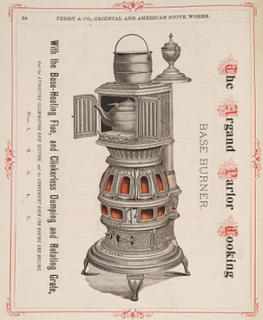 Base Burner from Oriental and American Stove Works Perry & Co
Base Burner from Oriental and American Stove Works Perry & Co New York: The Van Benthuysen Printing House, 1874.
 A center spread shows a full elevation of the Indian’s “Cradle Spring” frame
A center spread shows a full elevation of the Indian’s “Cradle Spring” framefrom Indian Motorcycle, Hendee Manufacturing Co Springfield, Mass: 1916.
"Pictures reach audiences more directly than text alone. They communicate the author’s tone and approach to the subject, and enhance our understanding and enjoyment of the text. Illustrations explain complicated ideas at a glance and even teach those who cannot read.
Pictures add beauty, color, and life to the printed page. They engage us, prompt our imagination, and appeal to readers and non-readers alike. Explore the power of pictures through these examples from the Smithsonian Institution Libraries’ collections in science, history, and art."
- The Smithsonian Picturing Words: The power of Book Illustration
- Direct link to the thumbnail page (this is a hefty load even on ADSL)
Galerie Dramatique
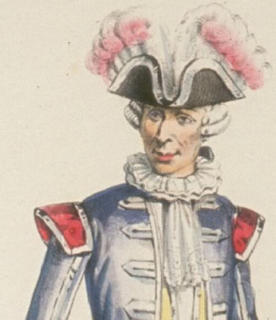
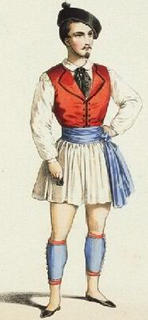
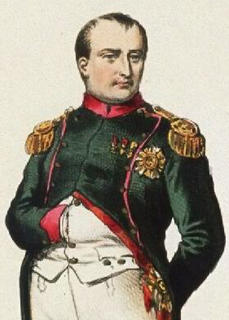

OK, well it seems I overlooked a few things at the University of Tsukuba website from the previous entry. From that digital collections site, there are 7 Galerie Dramatique books digitized in multiple formats (the trick for me was not to click on the thumb image in the left frame, but on the 'universal viewing' link beneath each). There are something in the order of 100 images in each volume.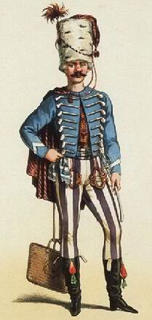
The title page is viewable in the 2nd volume - Galerie Dramatique Costumes des Théâtre de Paris. And some information from a book dealer shows that they were published in 1840.
Excellent! I can't imagine where the expression 'gay Paris' derived. And the interface has a pseudoflash click and zoom arrangement.
Galerie dramatique - (t.1 | t.2 | t.3 | t.4 | t.5 | t.6 | t.7)
Addit: All these images are from the first volume. I've only vaguely scanned the others. Perhaps I'll go through them sometime and foist another set onto the airwaves.
Tsukuba


The University of Tsukuba Digital Collections - Rare Books site has an assortment of esoteric works in a variety of formats of differing quality. They include Japanese scrolls, maps, images of prominent western figures and a bunch of others.
The highlight for me were the Left Series and Right Series of hawk images above. There's no information at all about them but they appear to have been etched, burnt and painted (yeah, I'm guessing) on articulating panel books. The universalflash interface is excellent and you can zoom in very close (closer than depicted here) with amazing clarity.
Hawks:
Left Series
Right Series
Gastronomica
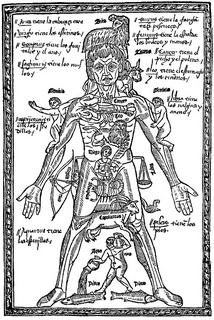 from Epilogo en medicina y cirurgia, Juan de Burgos, 1495.
from Epilogo en medicina y cirurgia, Juan de Burgos, 1495.Shows which parts of the body are affected by which signs of the zodiac.
Handmaide
for the Kitchin.
Containing
Manie principall pointes of Cookerie,
as well how to dresse meates, after sundrie
the best fashions vsed in England and other
Countries, with their apt and proper
sawces, both for flesh and fish, as also the
orderly seruing of the same to the Table.
Hereunto are annexed, sundrie
necessarie Conceits for the
preservation of health.
Uerie meete to be adioined to the good
Huswifes Closet of prouision
for her Houshold.
Imprinted at London by Richard
Jones, 1594
 Utensil Basket from Il Cuoco Segreto Di Papa Pio V
Utensil Basket from Il Cuoco Segreto Di Papa Pio V(The Private Chef of Pope Pius V), by Bartolomeo Scappi, Venice, 1570.
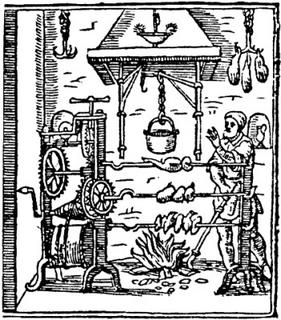 Cook With Turnspits
Cook With Turnspitsfrom Il Trinciante (The Carver),
by Vincenzo Cervio, 1604.
I guess I'm a bit naive. I didn't realise just how many old cookbooks were around. This is a sort of a 'cut my losses and run' type of post because I spent absolutely ages wandering around looking for succulent images. These woodcuts above will suffice. I'm hungry now. A renaissance dinner party sounds like a neat idea.
Friday, October 07, 2005
Mœurs Éthnologique
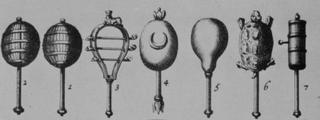
 Joseph-François Lafitau (1681-1746) was born in Bordeaux and studied philosophy, rhetoric and theology while becoming a Jesuit priest.
Joseph-François Lafitau (1681-1746) was born in Bordeaux and studied philosophy, rhetoric and theology while becoming a Jesuit priest.

Lafitau went to Canada New France when he was 31 years old and spent 7 years at a mission near Montreal where he learned about the language and culture of the Iroquois indians.
Lafitau is best remembered for 2 distinctly different reasons. Firstly, he discovered ginseng, which was a new world native plant. But his great work, published in 1724, was Mœurs des Sauvages Américains (Customs of the American Indians) in 2 volumes. This treatise was a landmark in comparative ethnology, as Lafitau attempted to demonstrate that the indians arose from a common origin as people from the west. He did so by presenting their cultural characteristics in contrast with classical manners and customs from the antiquities. The first illustration in the book seems to symbolically hint at the inventory and comparison approach that is to come.

"But where Lafitau departs from all the grand comparators is in his stress on the importance of describing cultures in terms of themselves. In his view the savages of the New World were men, the Iroquois were people in their own right, and their customary ways were worthy of study. This was a new kind of primitivism that would transform generic savages into specific Indians."
 As usual with old books, there is a meandering road of translation and editions and I couldn't find any particular information out about the engravings (all the image details here are from Volume One). At first I thought that some of the individual figures had been directly lifted from renaissance publications as the style is certainly reminiscent of european engraving. But on going through the 30 or so plates, it's obvious that the author or engraver has chosen to portray a variety of styles. Certainly there are a number of depictions from subcontinental Indian religion together with more classical figures side by side with Iroquois examples.
As usual with old books, there is a meandering road of translation and editions and I couldn't find any particular information out about the engravings (all the image details here are from Volume One). At first I thought that some of the individual figures had been directly lifted from renaissance publications as the style is certainly reminiscent of european engraving. But on going through the 30 or so plates, it's obvious that the author or engraver has chosen to portray a variety of styles. Certainly there are a number of depictions from subcontinental Indian religion together with more classical figures side by side with Iroquois examples.
I found this fascinating book among the Champlain Collection at the University of Toronto library.
- Index page - the whole book has been digitized.
- These are sample illustrations from Volume One in mid-size format - large jpegs are available.
- The original French version is also available via La France en Amérique Lafitau webpage
- Lafitau biography

Thursday, October 06, 2005
Vitruvius De Architectura

I never tire of discovering polymathic figures from the past, who make the multiskilling of today seem rather tame. Vitruvius, who lived during the first century B.C. is another of those who appears to have had gifts in a range of disciplines.
De Architectura (now referred to as The Ten Books of Architecture) was the first known treatise on the subject and in it Vitruvius displays talent in engineering, art as well of course as extensive architectural understanding. His account of human proportions in Book III inspired the very famous drawing above by Da Vinci. Vitruvius was an architect himself but the single construction definitely attributable to him has long since disappeared.

One famous quote (which could itself be a misquote from translation from latin in the 16th century) is - "Well building hath three conditions: firmness, commodity, and delight."
The history of the written text and many illustrations he drafted is very convoluted. There have been translation problems at the very minimum and if I understood correctly, the illustrations posted here are among a set sketched during the renaissance as faithful renditions from the original text.

Bill Thayer's University of Chicago website would appear to be the best resource on textual fidelity on the web. Clicking on the roman numerals
There are 11 pages of scanned illustration thumbnails (fast loading) at the Australian National University website.
Wikipedia on De Architectura.

Voyages
Containing an Account of Captain Dampier's Expedition
… in the Years 1703 and 1704 London: W. Botham for J. Knapton, 1707."
Thanks to the magnanimous Sylwester (who runs a very fine establishment) for reminding me to revisit Linda Hall Library of Science, Technology and Engineering. I was impressed enough (again) to go read their 'about' page which states fyi:
"Linda Hall Library is an independent public library of science, engineering and technology located on a 14 acre arboretum in Kansas City, Missouri. The public is welcome to use the collections on site without cost. The Library is used extensively by companies, academic institutions and individuals throughout the world. The Library was established by the wills of Herbert and Linda Hall and opened in 1946."
I'm really starting to think that it is the best online science exhibition site, bar none.
 (detail:) "Islanders in Boat off Tahiti from An Account of the Voyages ...
(detail:) "Islanders in Boat off Tahiti from An Account of the Voyages ...in the Southern Hemisphere ... by Captain Cook.
Edited by John Hawkesworth. London:
Printed for W. Strahan and T. Cadell, 1773."
 (detail:) "Couscous à grosse queue, fem. (Waigeo Island)
(detail:) "Couscous à grosse queue, fem. (Waigeo Island)[from:] Voyage Autour du Monde…
sur la Corvette…La Coquille Pendant les Années 1822-1825:
Paris: Arthus Bertrand, 1825-39."
Linda Hall have a really good exhibition, Voyages: Scientific Circumnavigations 1679-1859, in which they review the explorations of about a dozen of the foremost seafaring folk of yore, with a great set of visual accessories to the moderate level of explanatory text. This would be a primary source if I was trying to motivate a young person to get an interest in science AND history. I was surprised how long it held my (usually very short) attention (span). First rate illustrations as well. Am I sounding like a salesman for Linda Hall? Now that would be a cushy job.
e-c. in the year 1699 ...London: By W. Botham for J. Knapton, 1709"
 [full size]
[full size]Keio Nishikie Woodblock Prints












From the Treasures at Keio University in Japan. These are (to me) quite exquisite.
They have a few other things at Keio that I'll post in the future.
To make things easy, here are the thumbnail pages - when you click on any image, it will open in a Java applet, which may be a pain in some ways but the zoom is wonderful and there is excellent resolution.
The site is a little slow but I'm not criticizing reallly - the quality of what they offer exceeds any bumps accrued accessing it.
page I, page II, page III, page IV, page V, page VI, page VII
1871 sounds like a good guess judging from this translated (or thereabouts) commentary at the page of origin...
Writer: Ascent 斎 one scene picture subject: Tokyo place of interest 48 scene publishers: Ivy house good fortune warehouse age and the like: (1871 change of seal 1871) appearance: It is hard the large format brocade picture picture 帖 1 volume (also the table of contents 49 figures) (the 40.6×28.7cm) signature * sign: Ascent 斎 one scene writing brush shelf number: (560)

































































